The song by Dead Kennedys never got old when we were travelling through Cambodia. I still like it as a blog post-title as well.
First things first. Cambodia is a country that is between the southern part of Vietnam and southeast Thailand. Thailand borders the west/north, Laos is north as well, and Vietnam is east. The population today stands around 15 million, and 40% of those are under 15. Not sure if it has any natural resources or exports, but its infrastructure has rapidly improved from awful to inconvenient in the past 10 years. There are 2 main cities, Siem Reap and Phnom Penh. From what I read the rest is pretty undeveloped. They were very prosperous from the dawning of the common era, but their resources were streched a little thin when they tried to do too much in the 15th century. The French came in to help in the mid 1800s and their influence is still apparent. Pol Pot orchestrated one of the worst genocides in history, with an estimated 1.5 of the country's 8 million people dying as a direct result of his Kmher Rouge's policies. On with the stories...
Kelly and I flew from Bangkok to Siem Reap aboard Bangkok Airways (a wonderful airline that could not have been improved the 3 times we used it) and had arranged a pickup from the airport with our guesthouse before we left. Our tuk-tuk for the next 2 days greeted us with a sign for Kellg Furgal (a step up from Kelly Furgag, as the confirmation e-mail addressed her) and 2 bottles of water. We went to the Golden Villa guesthouse, which came equipped with more water in the bar fridge, bananas, TV with BBC and CNN Asian centres, and flower petals on the bed. All this, and the airport transport for only $15! That first night we got some food from the attached restaurant, which was cheap and delicious with fantastic staff, and went straight to bed.
The main attraction of Siem Reap, and arguably the main attraction of southeast Asia, are the Temples of Angkor. The temples were constructed between the 9th and 13th centuries mainly and really show the dominance of Cambodia at the time. They are magnificent. They seem excessive for the time, with their size and the number of temples, and it is shocking how they have held up through wars and weather. I could go on forever about the temples, but I'll try to keep it to the highlights.
The first day we did the 'small tour' for $10. It started at Angkor Wat, which to this day is the largest religious structure in the world. Interesting to see at the beginning, because the gate you walk through before the main temple has 3 God statues all given equal status. It started as a Hindu temple, so there's Vishnu, later converted to Buddhist so there's a Buddha, and a 3rd I can't remember. The main temple is huge, 3 levels representing hell, earth, and heaven. The hell layer was huge, maybe 400mx400m square with remarkable carvings on the walls the entire way (called bas-reliefs). The hell-earth-heaven theme is repeated often in the reliefs as well.
After that we went to Bayon, which has over 200 indentical-looking faces - although varying in size - looking in every direction atop numerous pillars stick up seemingly at random. (Bigger and less symetrical than pillars, but I can't find the word). The faces are said to resemble King Jayavarman VII to help him keep an eye on everything and everyone. This was one of the most interesting because most of it was roofless and it probably has the most fallen/damaged rocks lining the outside of all the temples we saw. Yet it was still in what seemed to be remarkable shape, with all the bas-reliefs looking crisp and impressive.
We then saw a few more smaller ones before we met Bas and Susanne and were caught in the rain. Bas is Dutch and he just got a job with Vodofone so he and his German girlfriend Susanne took some time before he started and travelled Southeast Asia. We tried hiding under a tree for shelter, but it wasn't long before we sucked it up and ran under something with a roof. We were hesitant to do that in the first place, because the Cambodian kids are absolutely relentless trying you get you to buy their crap. Bracelets, postcards, clothing, books, water, and many other items of varying uselessness are offered and every 'No' is ignored. Needless to say, with a captive audience they bombarded us with their stuff. The problem is that Kelly and Susanne actually bought some shirts, so they knew we had at least some interest. After we had the shirts, we thanked them for their help and took our chances with the rain.
The rain didn't let up much, we seperated from Bas and Susanne with dinner plans for that night and saw a few more temples (Thommanon and Banteay Kdei) which were nondescript compared to the others we'd seen.
We met Bas and Susanne for dinner at Amok (also the name of the most popular traditional Khmer (Cambodian) dish) and headed from drinks at Angkor What!? bar, where 2 pitchers for $10 gets you a free t-shirt! We obviously took advantage of the offer, with Bas and I proudly displaying our new threads for the rest of the night.
The next day we did the 'grand tour' with hopes taking a hot air balloon over the temples. Unfortunately it was too windy for the balloon to go out, so we settled on more temples. Most memorable were Pre Rup and Ta Prohm. Pre Rup was interesting because it was made of smaller bricks, like you see used for houses. The others are mostly huge blocks, bigger than cinder blocks. The smaller ones were cool because the wear is so different that it actually starts to look symetrical again. cylinders are worn into cones, edges are rounded off squares, and it all comes together to look somehow planned.
Ta Prohm is the one temple of the area that has been left to age naturally. Trees, plants, and rocks are all left in the place nature decided they should reside (unless dangerous of course). There are many fantastic scenes with trees absolutely taking over a wall, with roots weaving through the temple like thread through cotton. Very impressive how trees can adapt to their surroundings, with some literally growing on top of a wall of rock.
The only disappointing thing about the temples was that the price of admission ($20/day, or 3 days for $40) went to a private company. I imagine that this decision was made in haste following the destruction of the country through the genocide to make some quick cash, but that's only my theory.
We flew from Siem Reap to the Phnom Penh that night, and met some really cool people as we were getting off the plane. Kris recognized my bag as Mountain Equipment Co-op and the ex-Winnipegger was happy to mention it. He's been in London for about 10 years now, and his girlfriend Myra hit the scene after leaving Pakistan 5 years ago. They have travelled more than anyone I've ever met and were giving us some good tips. Great company to have around for food and drinks.
We were only in Phnom Penh for 1 full day so we had to make the most of it. We had a tuk-tuk driver named Lucky who took great care of us and we hit the S21 torture prison (a very chilling ex-school, where 7 of its 2000 inmates survived), the Killing Fields of Choeung Ek (where nearly 10,000 were executed), the Russian market (where Polo shirts were $4), the Royal Palace & Silver Pagoda (impressive buildings, nothing too special inside of them), and finally visited Cambodia Light Children's Association orphanage. We brought them so towels and Canada pencils, but the kids were happier just to see us. It was very moralizing to see these kids who were so happy, playing in the raining street with no shoes or shirts and loving it. They saw it as lucky to have food and shelter, and visitors like us were a luxury they weren't going to take for granted. They wanted to show us their rooms (5 to a room, sleeping on the floor), art, boxing moves, dances, books, everything. They were thrilled that we would be interested in them. My troubles had never been less important as they were when we left.
We had dinner with Myra and Kris and took Lucky out for a drink. We asked Lucky why he was so named, and he was thrilled to tell us his story. When Pol Pot's men came for his family, his mother was pregnant with Lucky, her 11th child. The cronies saw all the children and let Mr. & Mrs. Lucky live because of all the care they needed to give. Because her kids saved her life, she named him Lucky. He was even happier to tell us that of all his family members, 10 brothers & sisters and 2 parents, only 1 was killed in the genocide. Lucky felt just that way, that his family go through the whole thing practically unscathed.
Cambodia is a wonderful place that will make you appreciate everything your life has given you. The people are friendly, the food is delicious, and the history is fascinating. After everything they have been through, with all the uncertainty regarding the future, the people are still gracious and warm. Unforgetable.
Monday, October 22, 2007
Subscribe to:
Post Comments (Atom)





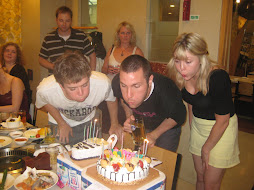




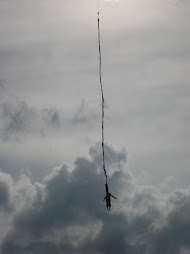



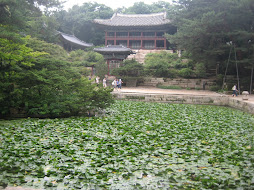
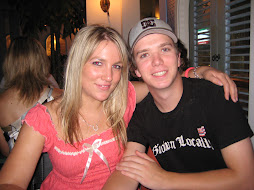
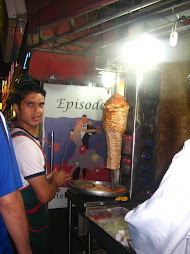



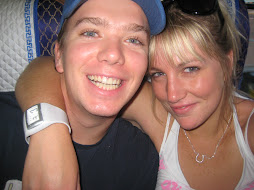




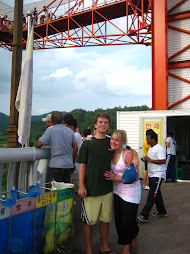


No comments:
Post a Comment